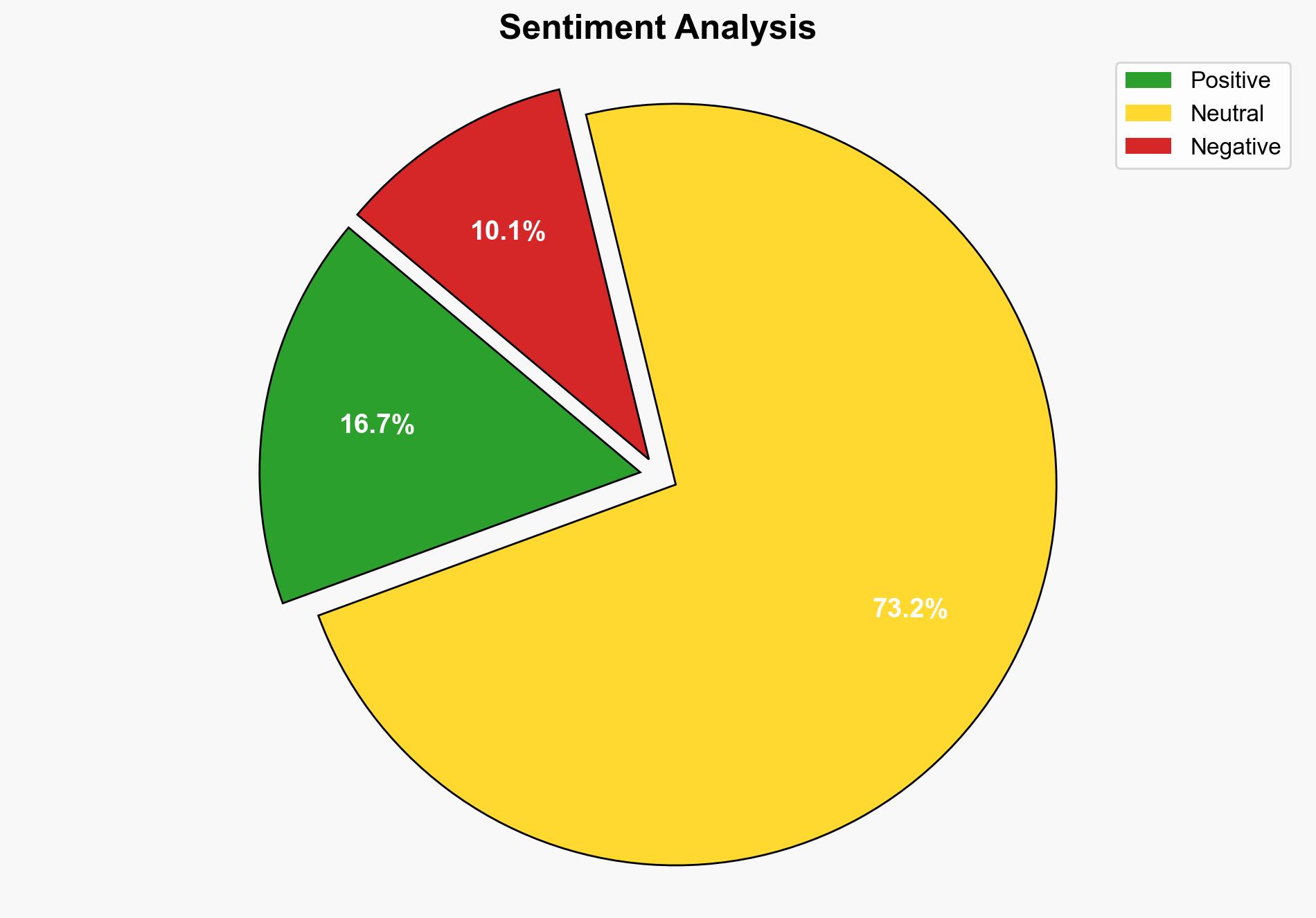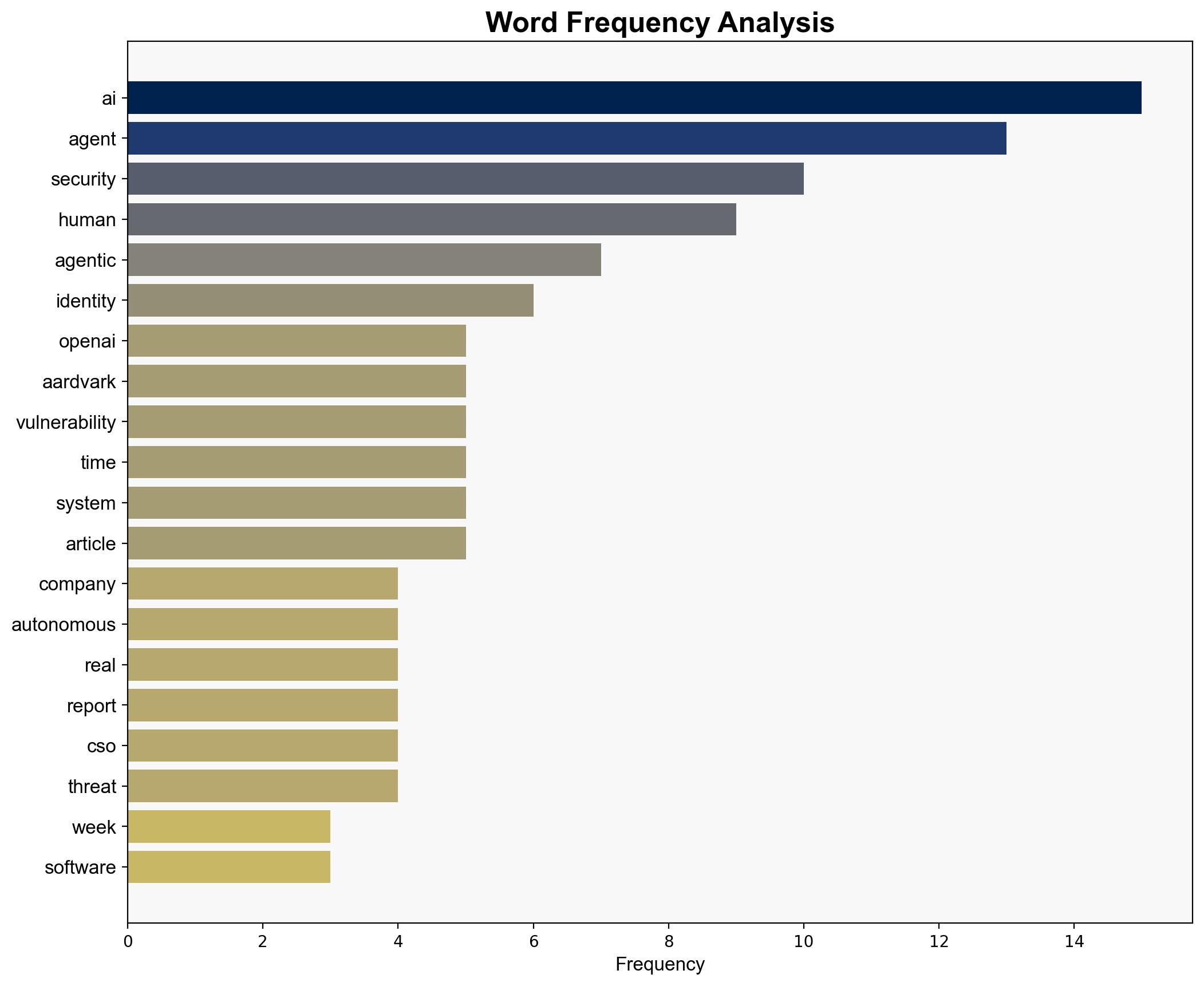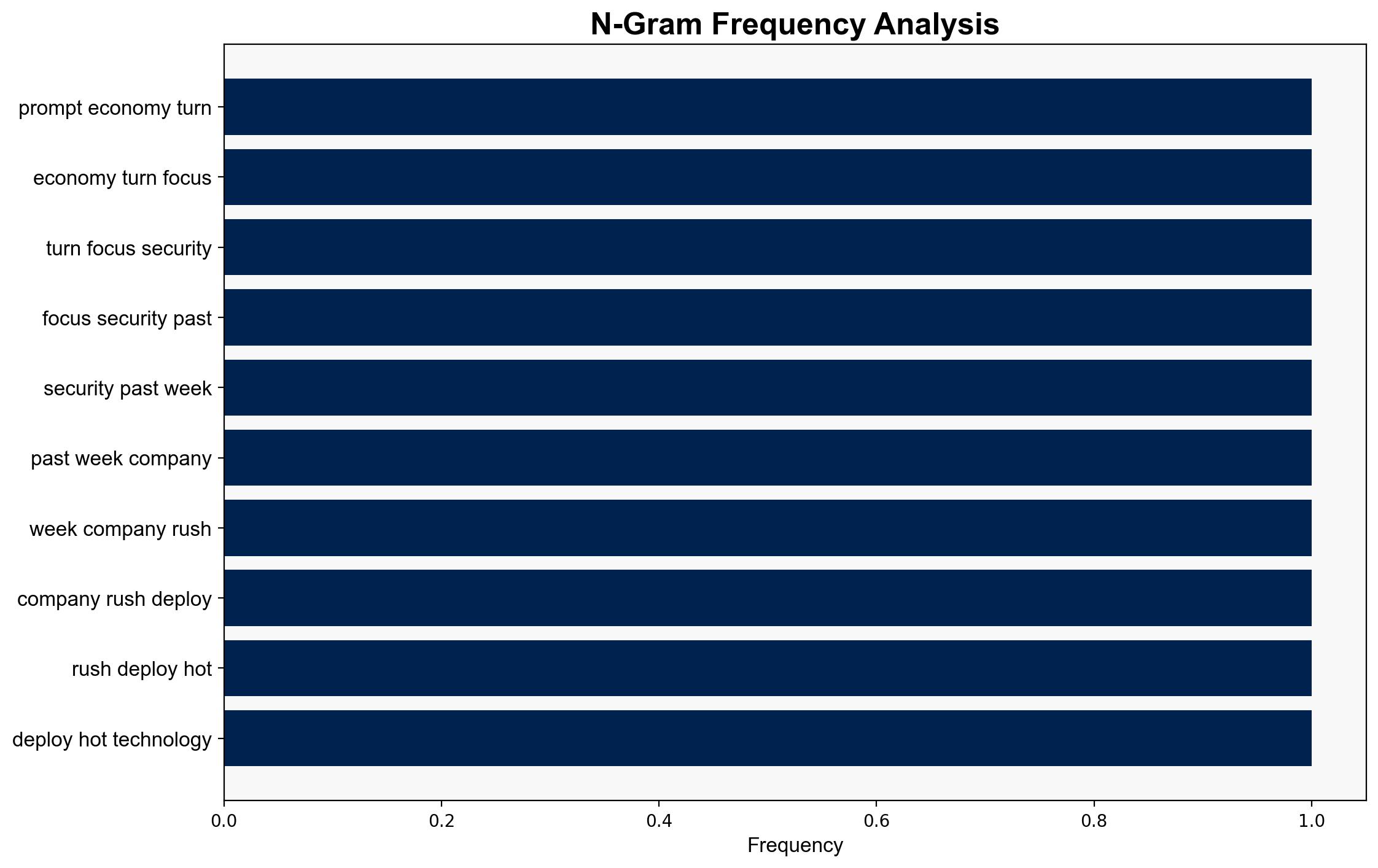AI Becomes Both Tool and Target in Cybersecurity – pymnts.com
Published on: 2025-11-03
Intelligence Report: AI Becomes Both Tool and Target in Cybersecurity – pymnts.com
1. BLUF (Bottom Line Up Front)
AI’s dual role as both a tool and target in cybersecurity presents significant opportunities and risks. The hypothesis that AI will enhance cybersecurity capabilities is better supported, given current technological advancements and integration trends. However, the potential for AI to introduce new vulnerabilities cannot be overlooked. Confidence Level: Moderate. Recommended Action: Prioritize the development of robust AI governance frameworks and invest in AI-driven cybersecurity solutions while preparing for potential AI-related threats.
2. Competing Hypotheses
1. **Hypothesis 1**: AI will significantly enhance cybersecurity capabilities by automating threat detection and response, thus reducing the time threats remain active and improving overall security posture.
2. **Hypothesis 2**: The integration of AI in cybersecurity will introduce new vulnerabilities and challenges, potentially creating a new category of non-human identities that could be exploited by adversaries.
Using the Analysis of Competing Hypotheses (ACH) 2.0, Hypothesis 1 is more supported due to the demonstrated capabilities of AI tools like OpenAI’s Aardvark in identifying vulnerabilities and the strategic advantage of AI in addressing talent shortages. However, Hypothesis 2 remains plausible given the potential for AI systems to be targeted or misused.
3. Key Assumptions and Red Flags
– **Assumptions**: AI systems will continue to improve in accuracy and reliability; organizations will adopt AI-driven solutions responsibly.
– **Red Flags**: Overreliance on AI could lead to complacency in human oversight; lack of comprehensive AI governance frameworks.
– **Blind Spots**: Potential for AI systems to be manipulated or attacked by sophisticated adversaries; underestimation of the complexity in managing AI-driven cybersecurity systems.
4. Implications and Strategic Risks
The integration of AI in cybersecurity could lead to a paradigm shift, enhancing defense capabilities and reducing human error. However, it also poses strategic risks such as the emergence of AI-driven cyber threats and the creation of new attack vectors. Economically, AI could reduce costs associated with cybersecurity operations but may require significant initial investments. Geopolitically, nations with advanced AI capabilities could gain a strategic advantage, potentially leading to an AI arms race.
5. Recommendations and Outlook
- Develop and implement comprehensive AI governance and ethical frameworks to guide the deployment of AI in cybersecurity.
- Invest in AI-driven cybersecurity solutions to enhance threat detection and response capabilities.
- Prepare for potential AI-related threats by conducting regular risk assessments and scenario planning.
- Best Case: AI enhances cybersecurity, reducing threats and operational costs.
- Worst Case: AI introduces new vulnerabilities, leading to significant security breaches.
- Most Likely: AI provides substantial benefits but requires careful management to mitigate associated risks.
6. Key Individuals and Entities
– Sandra McLeod
– John Scimone
– Naresh Persaud
– Pascal Geenan
– Rahul Ramachandran
7. Thematic Tags
national security threats, cybersecurity, counter-terrorism, regional focus





